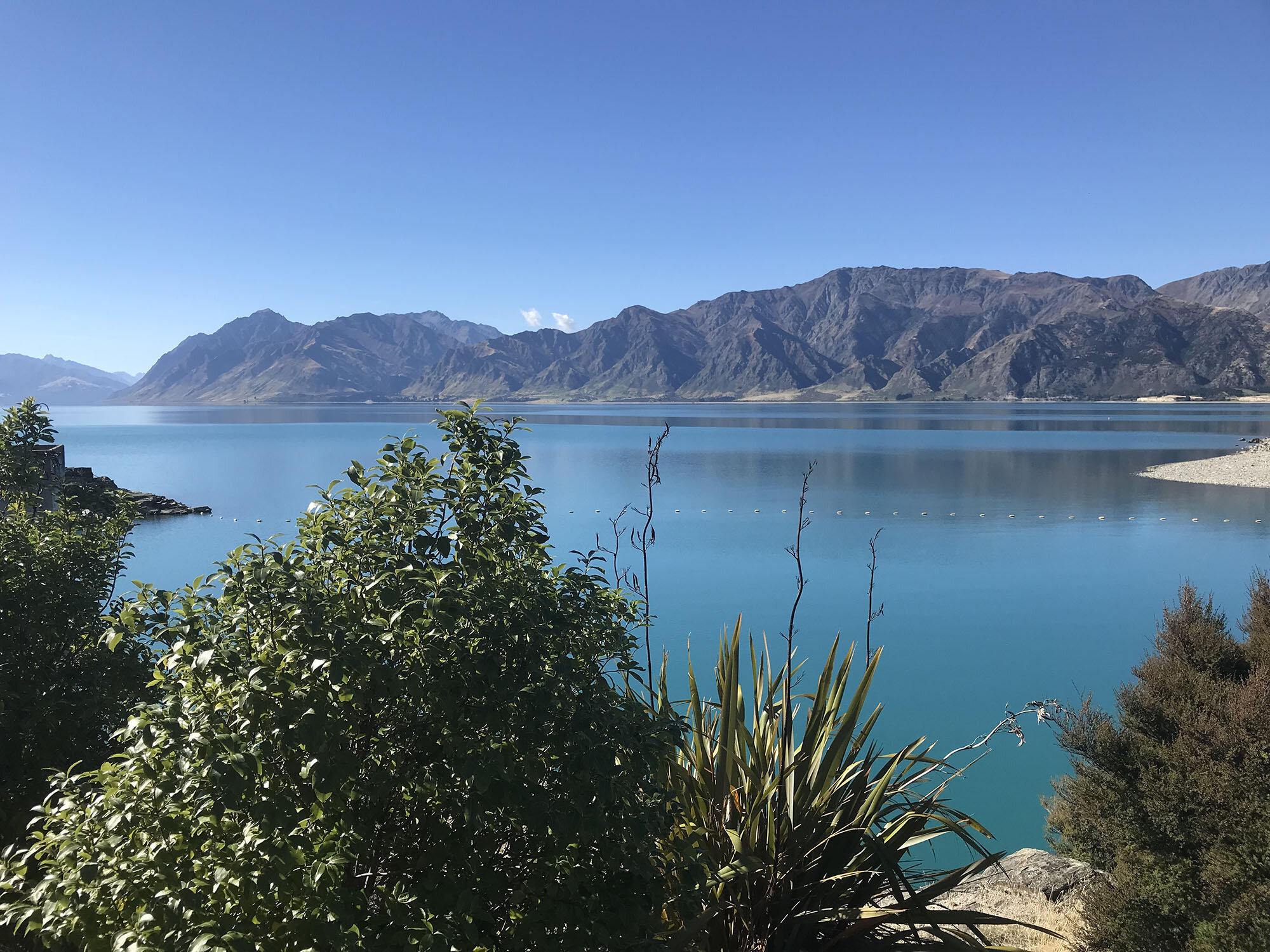
Geography & Ecology
Glacial valleys, deep lakes, rivers of snow-melt, active fault-lines and steep, rugged mountainous terrain. This is the geographical nature of the landscape that Hāwea is nestled amongst.
Much earlier than any human habitation in New Zealand, within the last million years, huge glaciers flowed from the main divide, developing the basins that were to become filled by lakes Wānaka and Hāwea. During several periods of glaciation, the ice was so deep that glaciers were connected at the rocky ridge known as ‘The Neck’. The ‘Hāwea advance’, which ended about 10,000 years ago, left the moraine mound that dammed the lake and today forms the southern foreshore of Lake Hāwea.
Lake Hāwea is fed by the Hunter River, and then creates the Hāwea river, which exits from the southern point of the lake with around twenty kilometres of twists and turns before joining with the mighty Clutha/Mataau River at Albert Town.
Lake Wānaka lies in a parallel glacial valley and the lakes are only 1000 metre apart at the Neck - an amazing view on a clear day up Isthmus Peak, where you can see the lakes on both sides.
Hāwea was dammed in the 1950’s for hydro-electric power generation, raising the lake level by 20 metres. Today, the water level of the lake varies over a range of 8 metres, depending on management of the Hāwea dam (by Contact Energy). The flow of the Hāwea River - an impressive sight when the water is churning and tumbling through the gates – likewise varies between about 10 and 200 cubic metres per second (cumecs).
Some statistics for the Lake (a full set of vital statistics can be found here):
Area: 141km²
Length: 35km long
Depth: 392m at the deepest point
Altitude: 348m
Ecology
The land surrounding the lake provides a habitat for native birds, significantly including the native NZ Falcon (Kārearea). There are many native skinks and geckos (some rare) and several sub-species of native Galaxiid fish are found in the creeks on the eastern side of the lake. As energy is put into regenerating native forest, and managing introduced predators, native birdlife is starting to increase with many more Tūī, Kererū, Korimako (Bellbird), Tauhou (Waxeye) and Pīwakawaka (Fantail).
The lake itself hosts many species of native water birds such as Kawau and Kāruhiruhi (Shags), Shelducks (Pūtangitangi), Scaup (Pāpango), gulls (Karoro) and Oystercatchers (Tōrea). Lake Hāwea is also home to two very special bird species, Great Crested Grebes (Pūteketeke) and Banded Dotterels (Tūturiwhatu). More information on these birds can be found here: Grebes and Dotterels. Native fish include Longfin Eels and bullies, while Brown and Rainbow Trout and Quinnat Salmon have been introduced as sports fish.
Remnants of indigenous (native) plants still exist within the lake surrounds. Woodland of Kānuka with some Mānuka are, dominant in some places, but elsewhere shrublands of Coprosma species and other small leaved divaricating (tangled looking) species feature. Matagouri is present, and there is native broom in places. Kōwhai and Pittosporum/Kōhūhū are there as well. Within these remnant native communities there are several plants that are categorised as threatened, at risk, vulnerable or declining. On the the Foreshore reserve next to the village there are small remnants of pre-settlement turf plant communities. Mountain Beech forest remnants are present on the the eastern and western slopes of the lake amongst mostly modified farmland. Enhancement of native remnants and riparian plantings within some of this farmland is a welcome recent development.
In 2017 five interpretive panels describing the local native plant communities were placed along the walking/biking track through the Foreshore Reserve, with the assistance of Queenstown Lakes District Council.
The Guardians of Lake Hāwea is a sub-committee of the Hāwea Community Association and is tasked to ensure that Lake Hāwea and its surrounds the water quality, biodiversity and ecosystems of Lake Hāwea and its surrounds are managed sustainably and safely. The 'Foreshore Working Group' and Guardians of Lake Hāwea are also working to enhance the biodiversity within the plant communities of the southern foreshore and have been able to re-introduce some of the threatened plants back into the environment.
The Wānaka Backyard Trapping is a community pest trapping project covering multiple locations in the Upper Clutha basin, including our community in Lake Hāwea. There are two active traplines around Lake Hāwea on the QLDC Reserve, Contact Energy & LINZ land, all managed by a team of local volunteers. One extends down the river track to just past the Hāwea dam & green waste centre; the other extends along the foreshore from below the Hāwea hotel right along to John Creek.





